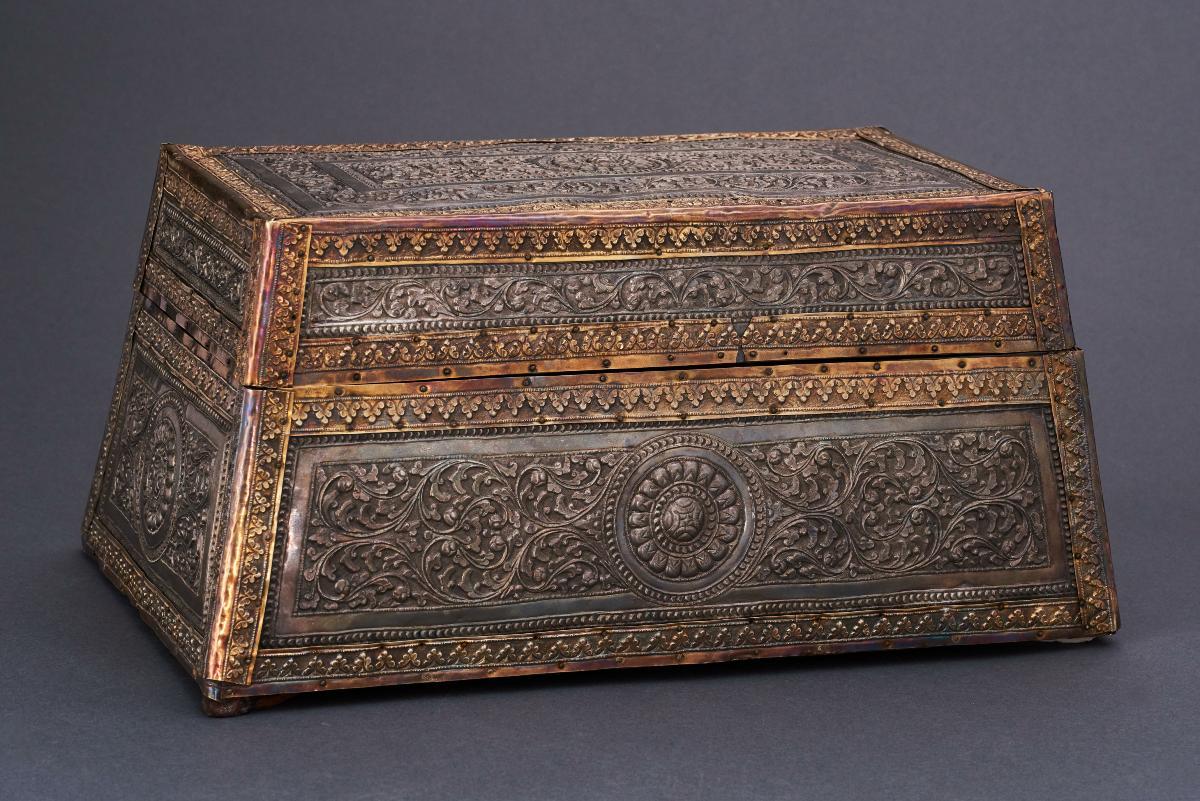This highly unusual sireh set, known as a kinangan by the Makassarese, is made from panels of Vietnamese and Chinese blue and white trade ceramics that have been ingeniously cut into segments and formed into the individual containers. The pieces are held together with a framework of silver, neillo and silvergilt filigree mounts. The metalwork is decorated in a style typical of ethnic Chinese silver and gold smiths operating in South Sulawesi.The chewing of sireh was popular across much of Southeast Asia until the 20th century. Betel nut, the active ingredient, has a mild narcotic effect and the consumption of it had important social significance. Everyday sireh sets are usually nondescript but decorative sets were fashionable as a show of wealth. Vietnamese and Chinese trade ceramics often became prized heirlooms in Southeast Asia, but their incorporation into a set like this is unusual.















